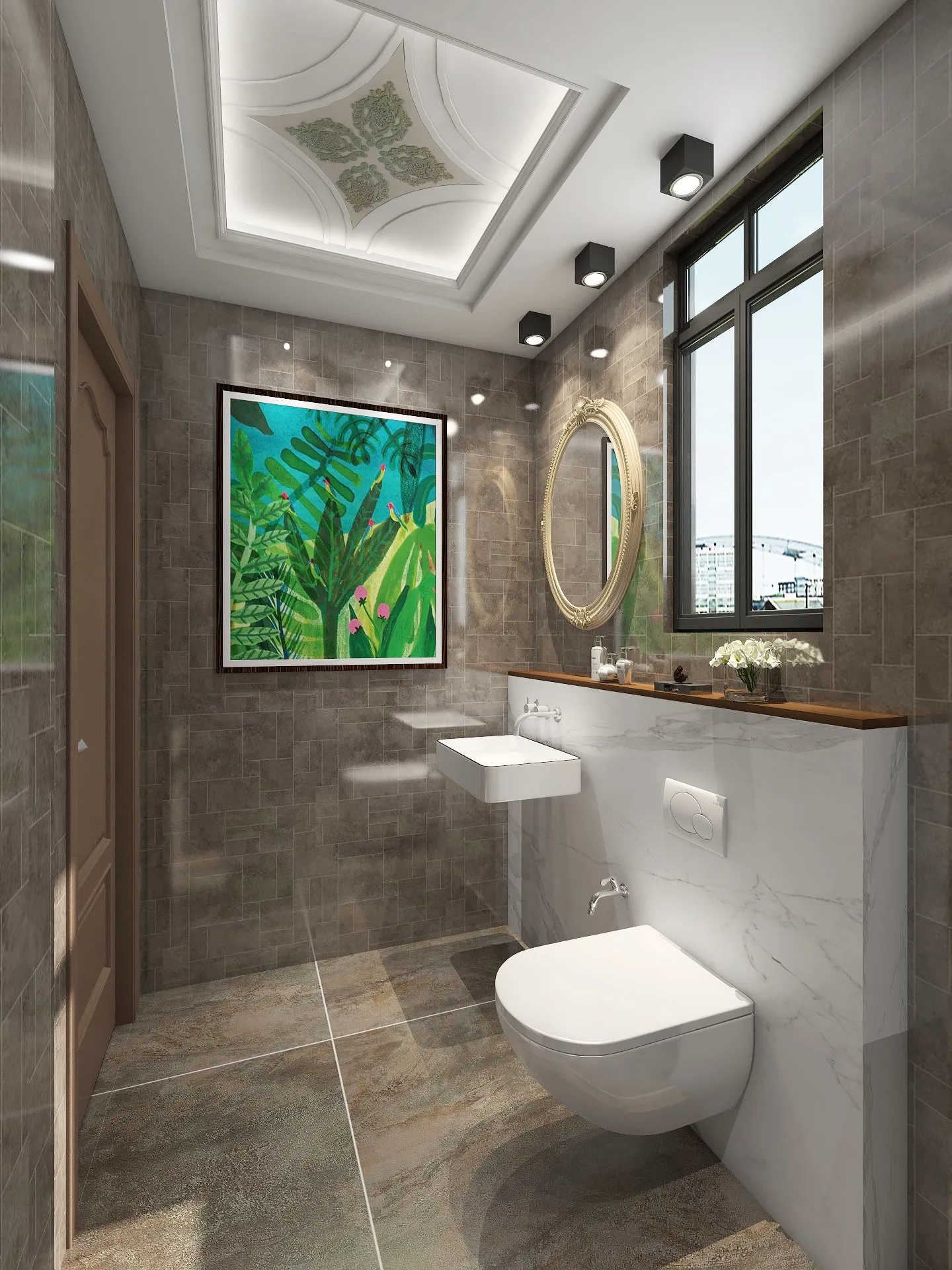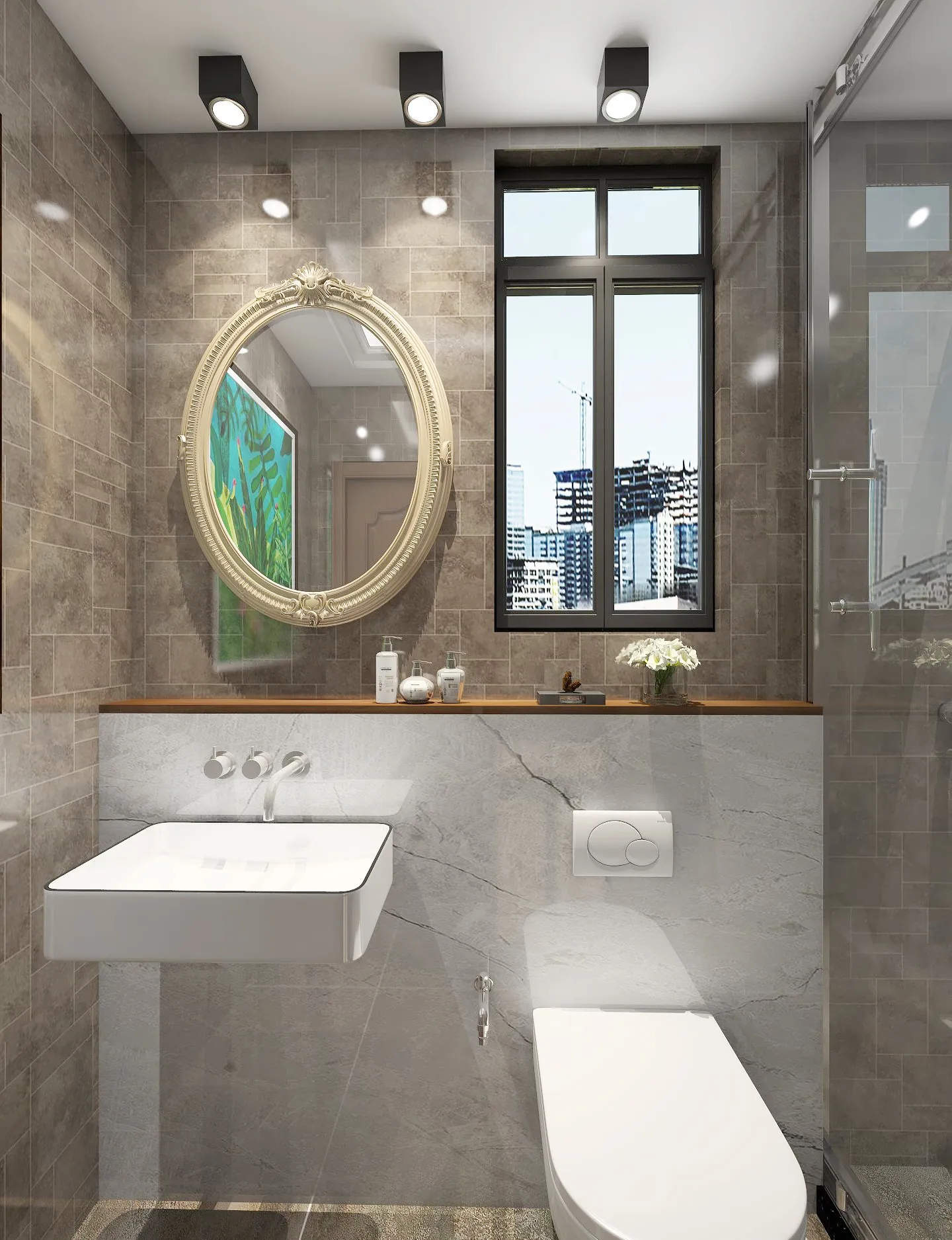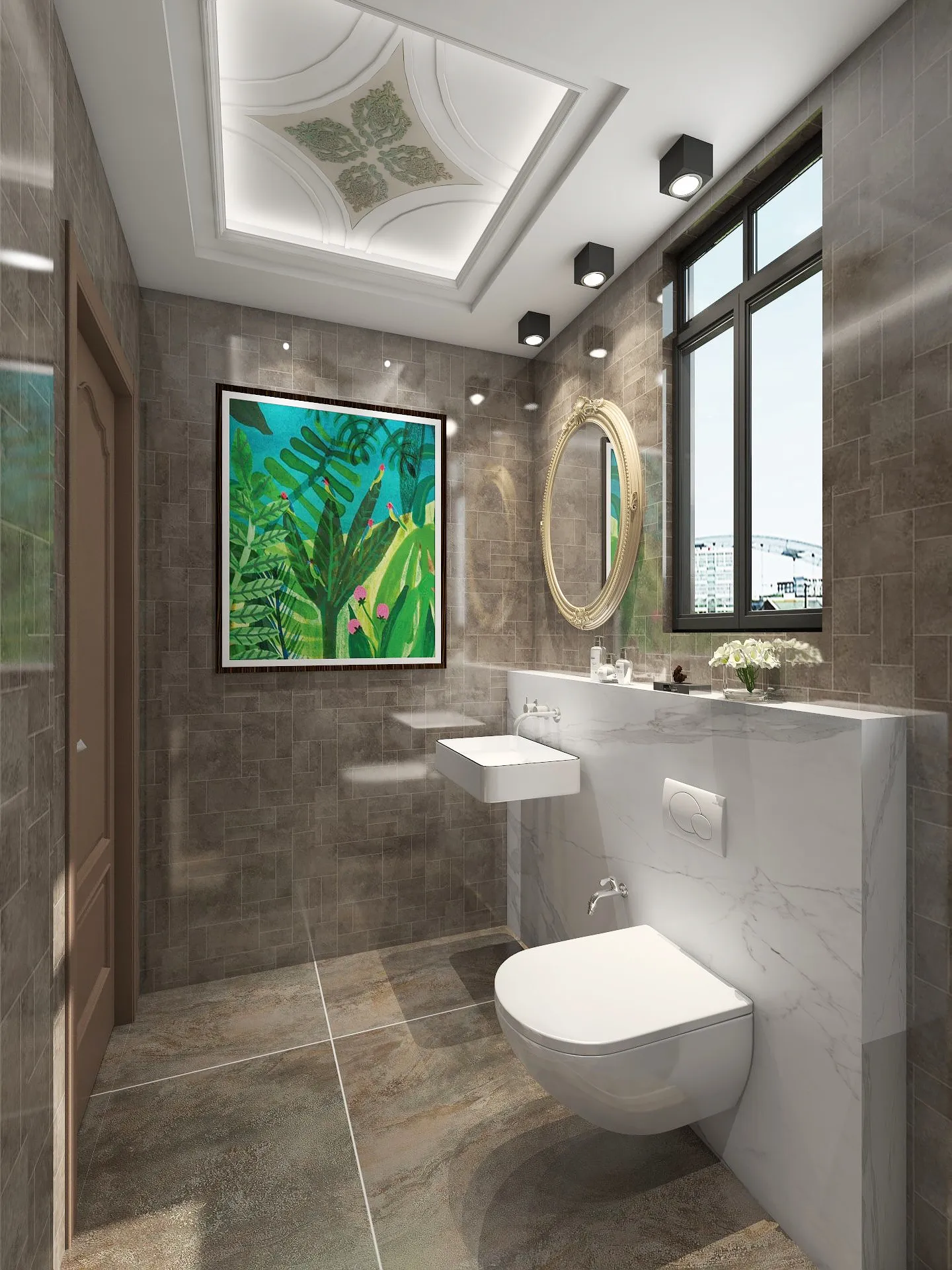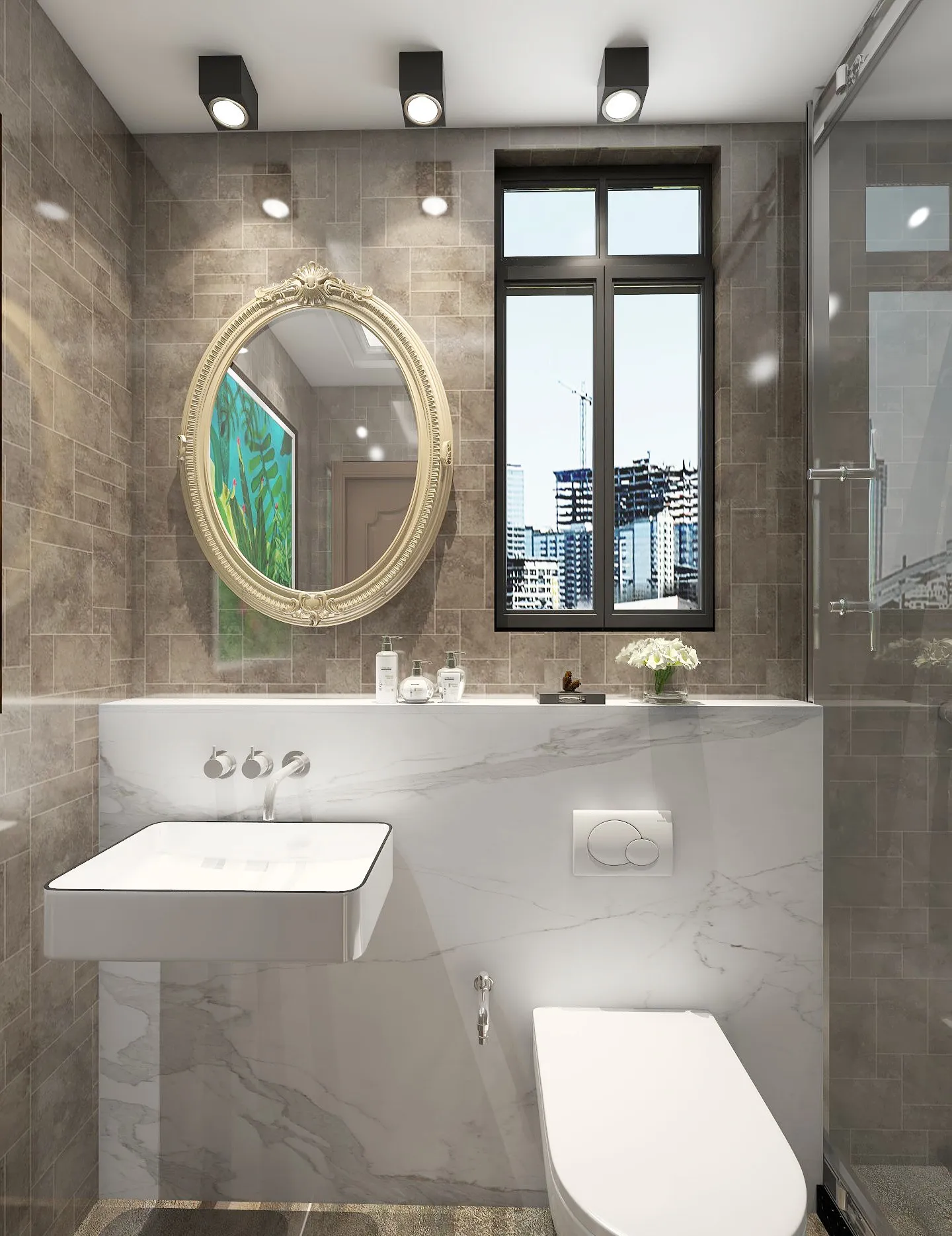
Modern Minimalist Must‑Have: Aesthetic Design of Concealed-Spout Basin Faucets

In the world of interior design, modern minimalism has evolved from a trend to a lifestyle—one that values simplicity, functionality, and intentionality. Every element in a space is chosen not just for its purpose, but for how it contributes to a sense of calm and cohesion. Nowhere is this more evident than in the bathroom, where the quest for clutter-free surfaces and seamless lines has given rise to innovations that blend form and function. Among these, the concealed-spout basin faucet stands out as a quiet revolutionary, redefining what it means for a bathroom fixture to be both utilitarian and beautiful.
Gone are the days when faucets were merely practical tools bolted to the countertop, their bulky handles and exposed pipes disrupting the visual flow of the room. Today's design-conscious homeowners and designers are turning to concealed-spout models, where the mechanics are hidden within the wall or counter, leaving only a sleek spout and subtle controls to grace the space. This shift isn't just about aesthetics; it's about creating environments that feel intentional, uncluttered, and deeply personal. Let's dive into the world of these understated yet impactful fixtures, exploring how they've become a cornerstone of modern minimalist design.
The Philosophy Behind Concealed Design: Less is More, More is Better
Modern minimalism isn't about stripping a space bare—it's about removing the unnecessary so the essential can shine. This philosophy is at the heart of concealed-spout faucet design. By tucking away the valve bodies, pipes, and hardware behind the wall or within the countertop, these faucets eliminate visual noise, allowing the bathroom's other elements—whether it's a striking porcelain slab tile wall, a floating vanity, or a backlit mirror—to take center stage.
Imagine a bathroom where the countertop stretches like a smooth, unbroken canvas, interrupted only by the gentle curve of a spout emerging from the wall. There are no handles to clutter the surface, no exposed plumbing to distract the eye. Instead, the focus is on the play of light across materials, the way water flows from the spout like a quiet waterfall, and the overall sense of spaciousness that comes from reducing visual distractions. This is the magic of concealed design: it creates a sense of "less," but in doing so, it delivers so much more in terms of atmosphere and tranquility.
Concealed-spout faucets also align with the minimalist principle of "form follows function." Every aspect of their design is purposeful. The spout's angle is calibrated for optimal water flow, the controls are placed for intuitive use, and the hidden hardware is engineered for durability. There's no excess, no decoration for decoration's sake—just a fixture that works beautifully and looks even better.

Aesthetic Elements: The Art of Invisible Design
The beauty of concealed-spout basin faucets lies in their ability to blend into their surroundings while still making a subtle impact. Let's break down the key aesthetic elements that make these fixtures so compelling.
Lines and Form: The Language of Simplicity
Concealed-spout faucets are masters of clean lines. Unlike traditional faucets with their multi-part structures, these models often feature a single, unbroken spout—whether cylindrical, rectangular, or gently curved—that extends from the wall or countertop with purposeful precision. The absence of visible handles (many use touchless sensors or integrated controls hidden in the counter) further streamlines the look, creating a silhouette that feels almost sculptural.
Take, for example, a cylindrical spout in matte black, emerging from a wall clad in smooth porcelain slab tile. The contrast between the spout's dark, defined line and the tile's neutral expanse creates a visual rhythm that's both calm and dynamic. It's a study in balance—enough detail to draw the eye, but not so much that it overwhelms the space.
Color and Material: Harmony with the Environment
Material choice is critical in minimalist design, and concealed-spout faucets excel here. Designers often opt for materials that complement rather than compete with their surroundings. Brushed nickel, matte black, and polished chrome are popular choices, each offering a different mood: nickel adds warmth, black brings drama, and chrome offers a cool, reflective finish.
For those seeking a more organic touch, some manufacturers now offer faucets in natural materials like brass (with a living finish that patinas over time) or even stone accents, though these are less common and often reserved for high-end, custom projects. The key is that the material should feel like an extension of the bathroom's palette—whether it's matching the hardware of a vanity mirror or echoing the tone of a nearby light fixture.
Integration with Surfaces: The Illusion of Seamlessness
Perhaps the most striking aspect of concealed-spout faucets is how they integrate with their surroundings. When installed in a wall, the spout appears to float, with only a small escutcheon plate (the decorative cover for the wall opening) visible. In countertop installations, the spout may rise directly from the surface, with controls hidden beneath the counter or integrated into the vanity's edge.
This integration is particularly effective with modern countertop materials like large-format porcelain slabs or solid-surface materials, which offer uninterrupted expanses. Imagine a white quartz countertop with a thin, rectangular spout in matching white—so seamlessly integrated that it's almost hard to tell where the counter ends and the faucet begins. It's this "invisible" quality that makes concealed-spout faucets a favorite among designers aiming for a truly cohesive look.

Design Comparison: Traditional vs. Concealed-Spout Faucets
| Aspect | Traditional Faucets | Concealed-Spout Faucets |
|---|---|---|
| Design Aesthetic | Visible handles, exposed pipes, multiple components; can feel cluttered in minimalist spaces. | Single spout, hidden hardware, integrated controls; clean, unbroken lines. |
| Installation Type | Countertop-mounted with visible base and plumbing connections. | Wall-mounted or countertop with hidden plumbing; requires rough-in during construction. |
| Space Requirement | Needs counter space for base and handles; limits countertop usable area. | Minimal footprint; frees up counter space for toiletries or decor. |
| Maintenance Accessibility | Easier to access for repairs (exposed parts), but more crevices for grime buildup. | Requires access panel for repairs, but fewer exposed surfaces mean less cleaning. |
| Water Flow Control | Traditional handles or levers; may have limited precision in temperature/flow adjustment. | Often features advanced cartridges for precise control; some offer touchless or app-based adjustment. |
| Compatibility with Countertop Materials | Works with most materials, but requires pre-drilled holes that can limit slab size/design. | Ideal for large-format materials (porcelain slabs, solid surface) as no pre-drilled holes are needed. |

Materials and Engineering: Beauty That Lasts
Aesthetics aside, concealed-spout faucets are built to perform. Behind their sleek exteriors lies engineering that ensures reliability, durability, and efficiency—key considerations for any bathroom fixture, but especially one with hidden components that are harder to repair.
The spout itself is typically made from solid brass (a material prized for its corrosion resistance and strength) or high-grade stainless steel. These materials stand up to daily use, resist water spots, and maintain their finish over time. Inside the wall, the valve bodies are often constructed from brass or ceramic, with precision cartridges that control water flow and temperature with minimal friction—reducing wear and tear and ensuring smooth operation for years.
Water efficiency is another area where concealed-spout faucets shine. Many models are designed to meet or exceed WaterSense standards, using aerators to reduce water flow without sacrificing performance. This not only lowers utility bills but also aligns with the minimalist ethos of mindful consumption—using only what you need, and using it well.
For commercial spaces like hotels or restaurants, where durability is paramount, some manufacturers offer reinforced models with heavy-duty valves and scratch-resistant finishes. These faucets are built to withstand high traffic while maintaining their aesthetic appeal—a testament to the versatility of the design.
Practical Considerations: Installation, Maintenance, and Versatility
While the beauty of concealed-spout faucets is undeniable, they're not just for show—they're surprisingly practical, too. Let's address some common questions about their installation, upkeep, and suitability for different spaces.
Installation: Planning for the Future
One of the biggest misconceptions about concealed-spout faucets is that they're only for new construction. While it's true that installing them in an existing bathroom may require some wall or countertop modification (to hide the plumbing), it's often worth the effort for the aesthetic payoff. Many homeowners opt to include them during renovations, taking advantage of open walls to run the necessary pipes.
For new builds, the process is straightforward: during the rough-in phase, the plumber installs the valve bodies and pipes within the wall, leaving only the spout and control connections exposed. This pre-planning ensures a clean, seamless finish once the bathroom is complete.
Maintenance: Less Cleaning, More Living
Another concern? Maintenance. With hardware hidden in the wall, is it hard to fix if something goes wrong? The short answer: not really. Most concealed faucets come with access panels (either in the wall behind the fixture or in an adjacent closet) that allow plumbers to reach the valves without damaging the wall. And because there are fewer exposed surfaces, there's less area for soap scum and water spots to build up—meaning less time spent cleaning and more time enjoying your bathroom.
Versatility: For Every Space and Style
Concealed-spout faucets aren't just for luxury bathrooms or minimalist homes. They work in a range of spaces, from small urban apartments (where every inch of counter space counts) to large, spa-like retreats. Their adaptability lies in their ability to complement different design styles—whether paired with a sleek, floating vanity in a modern loft or a rustic wooden countertop in a Scandinavian-inspired bathroom.
In commercial settings, they're equally at home. Hotels use them to create a sense of luxury and uniformity, while restaurants and cafes appreciate their durability and easy-to-clean design. Even healthcare facilities are starting to adopt them, thanks to touchless options that promote hygiene—a practical feature that also aligns with minimalist aesthetics.
Pairing with Bathroom Accessories: Creating a Cohesive Look
A concealed-spout faucet is just one piece of the bathroom puzzle. To truly achieve a minimalist look, it should be paired with accessories and fixtures that share its ethos of simplicity and intentionality. Let's explore how to create a cohesive space.
The Vanity and Basin: A Foundation of Simplicity
The vanity and basin are the faucet's closest companions, so their design should complement each other. Wall-mounted vanities with floating countertops are ideal, as they eliminate bulky cabinetry and create the illusion of more space. Under-mount or vessel basins (with clean, simple shapes) work best—avoiding ornate detailing that would clash with the faucet's minimalism.
Lighting and Mirrors: Enhancing the Mood
Lighting plays a key role in highlighting the faucet's design. Soft, diffused lighting (like LED strips under the vanity or recessed ceiling lights) creates a warm glow that emphasizes the spout's lines. A large, frameless mirror above the basin reflects the faucet and opens up the space, making the entire area feel larger and brighter.
Storage and Decor: Less is More
Minimalist bathrooms thrive on hidden storage. Wall-mounted cabinets with push-to-open doors, built-in niches, and under-vanity baskets keep toiletries out of sight, allowing the faucet to remain the focal point. When it comes to decor, a single potted plant, a small stone sculpture, or a textured towel (in a neutral tone) is all you need—just enough to add warmth without clutter.
Future Trends: Where Concealed Design is Headed
As technology advances and design preferences evolve, concealed-spout faucets are poised to become even more integral to modern bathrooms. Here are a few trends to watch:
Smart Integration
Touchless technology is already common, but future models may offer even more smart features: app-controlled temperature settings, water usage tracking, and integration with home automation systems. Imagine adjusting your faucet's flow rate from your phone, or having it automatically turn off after a certain time to prevent waste—all while maintaining that sleek, hidden design.
Sustainable Materials
As eco-conscious design grows, we'll see more faucets made from recycled metals, low-VOC finishes, and biodegradable components. Manufacturers are also exploring ways to reduce water waste further, with advanced aerators and pressure-compensating valves that deliver a satisfying flow while using less water.
Customization
While minimalism often favors uniformity, there's a growing demand for personalized touches. Some companies now offer custom spout lengths, finishes, and even shapes, allowing homeowners to create a faucet that's uniquely theirs—without sacrificing the clean, concealed look.
Conclusion: More Than a Faucet—A Lifestyle Choice
Concealed-spout basin faucets are more than just bathroom fixtures; they're a reflection of a design philosophy that values simplicity, functionality, and beauty in equal measure. By hiding the unnecessary and highlighting the essential, they transform bathrooms from utilitarian spaces into sanctuaries of calm—places where every element feels intentional and every moment feels like a retreat from the chaos of daily life.
Whether you're building a new home, renovating an existing bathroom, or simply looking to upgrade your space, a concealed-spout faucet offers a timeless solution that will adapt to changing trends and grow with your lifestyle. It's a small change that makes a big impact—proof that sometimes, the most powerful design statements are the ones that say less.
In the end, modern minimalism isn't about perfection; it's about creating spaces that feel true to who we are. And in a world filled with noise and clutter, a bathroom with a concealed-spout faucet isn't just a design choice—it's a choice to live more intentionally, one quiet, beautiful moment at a time.
Tags:
Recommend Products











